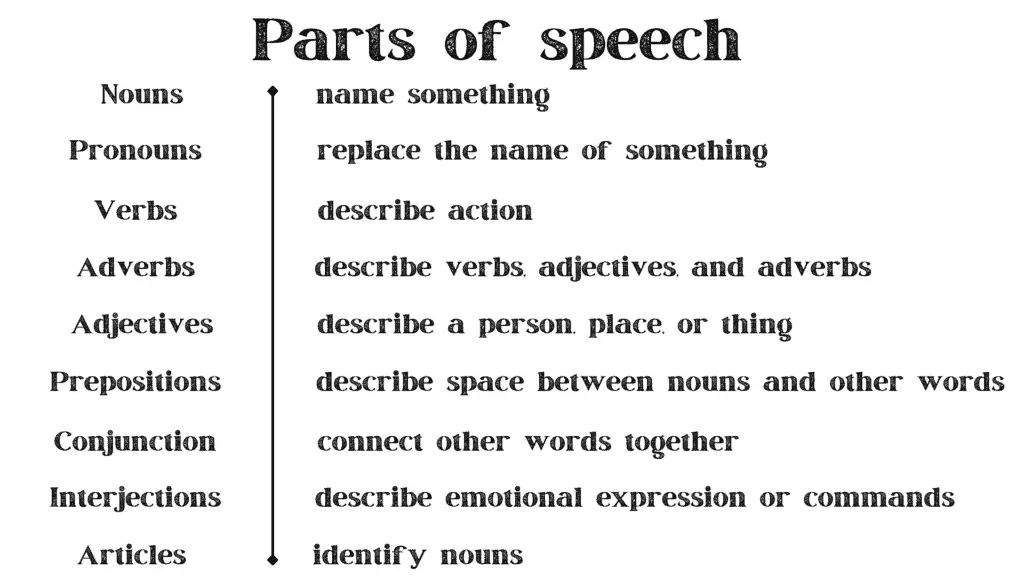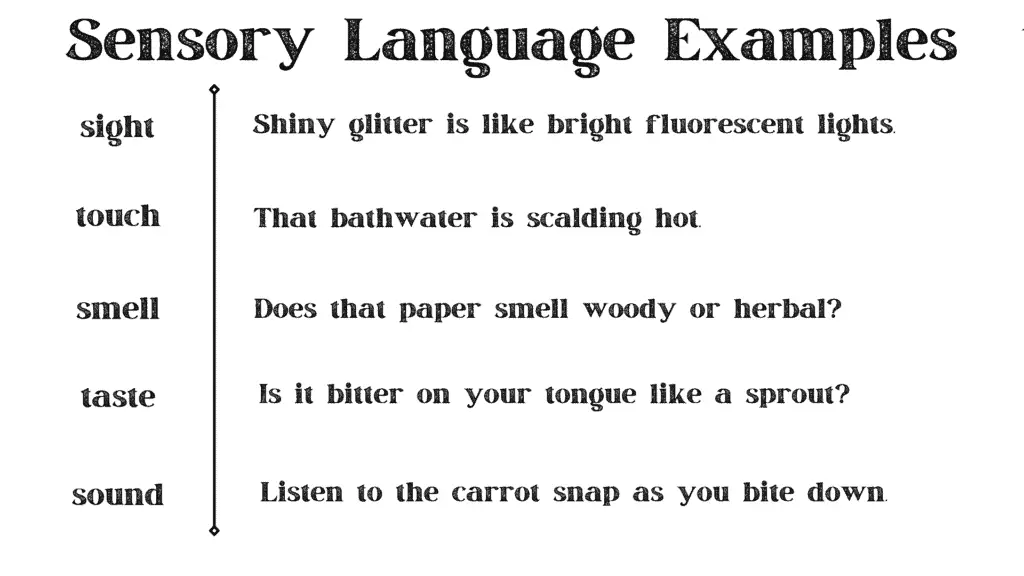Learning to communicate with your kids is a normal part of parenting. Learning to communicate sensory language and play games is just as important. We get used to the grind of our everyday routines–coffee, breakfast, park or books, bath, and bed. Boring patterns make our language suffer if we take it for granted and forget to elaborate. Where did our creativity go? Sensory language will not only help you communicate with your children better, but it will also ignite a deeper understanding of the tasks or activities at hand.
Sensory play is simple if you understand that the language starts with you, the parent. Practicing language patterns throughout your day will reinforce skills and prepare children for future learning. Supporting them through child-led practices encourages engagement and promotes creativity.
Understanding different speech techniques commonly used to promote child-led sensory play will help your day run more smoothly. There will be less pushback between you and your family if you are transparent, creative, and patient. Introduce kids to the senses and sensory language as soon as possible to build communication skills and encourage bonding.

Where and how should sensory play start?
Sensory play can start anywhere. Most parents get the idea that there needs to be a specific place for everything. No doubt we feel controlled by this urge to organize, micromanage, and tidy constantly. And for a good reason, we feel scattered and want to control what we can. However, with sensory play, there is a delicate balance between placement, opportunity, and coaching. There may not always be an ideal place for this exploration to happen, but we shouldn’t discourage children when they propose an idea.
It could be a small corner of a room, a sink, an outside sand area, or a porch. If you wish to redirect your child, take your time. Try not to disappoint the child immediately. Sometimes this spontaneous exploration can be forceful and direct; other times, it could be that a child is apprehensive. If this is the case, try not to inhibit the learning and gently show them appropriate areas for sensory exploration. If your child is aggressive, I propose the same solution– calm redirection because it shows that you understand the have a goal. As they grow, they will understand where to put certain fluids and textures to appease their mentors.
Why is sensory play so important for children and their development?
Senses connect memories. We should all be familiar with some of the smells of our childhood. It’s no surprise that senses are integral to our learning as children, and many memories are associated with specific sensory experiences. Allowing children to explore their surroundings and engage in the senses will strengthen their memory and improve focus.
These little memories will connect in a way that initiates curiosity and encourages further exploration and eventually mastering skills. Again, depending on the age of the child, it will be messy. Toddlers and school-age children, for example, need consistent re-direction and instruction if the placement of the sensory activity is a worry to you. The benefit of learning to positively associate memories with senses significantly outweighs the risk of a sandy kitchen.
How do children benefit from sensory play?
When children have the space to connect with their senses, they learn to be more creative, relaxed, and focused. They learn to think creatively and solve problems. By focusing on small sensory tasks, children strengthen parts of the brain that control impulsive behaviors. Children are more likely to connect with adults and concentrate on tasks that are unrelated to their senses. They will learn to listen and communicate more when they have a significant amount of time set aside for sensory experiences.
When they are entertaining themselves through their senses, they become more calm and grounded. They will feel that their ideas and explorations are valid. Self-worth isn’t always something we teach directly, but helping kids focus on their interests improves their quality of life because it teaches them that their sensory experiences are worth the effort.

What are the five senses for sensory play?
The five senses are sight, touch, smell, taste, and sound.
In my experience, it’s best to navigate through the senses with an understanding that it is personal and that development varies. Instead of focusing on age range, gender, or season, try to focus more on the senses, so no one feels pressured to do something or misses out on opportunities just because a list says ages 5-10, for example. Use your best judgment and follow your senses.
If you think your children are too young, use an element from a suggested activity and start simple. If your kids are older, see how they can build on the recommended ideas to create their version or propose new ideas. There should be no right or wrong answers or bad suggestions here. Try to make it a judgment-free zone. The goal should be to lead yourself in a direction that introduces concepts, guides communication, and encourages further exploration.
Please read the post on sensory ideas for kids to learn more about appropriate settings, ideas, and examples of sensory play. This article is full of materials and introduces caregivers to the idea that sensory play can be versatile and engaging for all family members. Focusing more on the family connections and senses will help you understand that there can be so many opportunities for engagement. There is also a great chance that your activities will overlap with another sense. That is okay!
What is sensory language known as?
Sensory language should be descriptive and creative. Sensory language is used in many different ways– writing, communicating, and story-telling. Understanding how to portray a specific sense through language starts with understanding the parts of speech useful for this type of communication. These words should help your children understand that what you are describing is something that activates your eyesight, sense of touch, nose, tastebuds, or ears.
Understanding different parts of speech is a valuable tool to have in your pocket. Try using more verbs, adjectives, adverbs, and prepositions. These will help describe the activity and teach them to gravitate towards a more creative outlet. Verbs describe actions. Adjectives describe a person, a place, or a thing. Adverbs describe verbs, adjectives, and other adverbs. Prepositions describe the space between the noun and the other words in the sentence. All of these used together will create a picture for you to base your language on and prepare you and your child for more sensory language. Use language to help you and your child feel, see, hear, smell, and taste.

Try with a small aspect of speech and build on that. If all you know about a child’s activity is that something looks squishy, say it. If your child decides to move a part of their experience elsewhere, try using words that describe the material placement and how it moves. Encourage them to understand that what you do with your hands changes perception. Ask them if they notice anything different about the material’s movement.
That looks squishy.
The slime is oozing down the doll face.
Now it’s between the arm and it’s dripping onto the doll’s leg.
Depending on where you are in the world, your language options could differ from someone else’s. Building off what you have should be a priority because you are likely a busy and tired person. Don’t try to overwhelm yourself with massive textbooks or dive into neuroscience yet. Start simple and kind.
Sensory language– examples & ideas
What words should you use to see, feel, smell, taste, and hear? Look to see what your child is engaging in to assess the language. You probably have quite a few in the vault already. Sometimes, we parents need good dusting off.

How to use sensory language– writing, playing, speaking
Learning to incorporate small language routines will significantly benefit your family. It would be best if you let your child practice this communication. They will be incorrect at first, and that is okay. Use a physical experience they are having and a verbal response to teach them to identify certain aspects of their senses. If you model this skill and practice your own language, they will more likely start talking about what they are experiencing in real life.
Doing this during playtime allows them to practice during activities. Parents who value sensory language at home are preparing for when they eventually part from their child in a public place. It is an excellent habit to get into and will show your child that you care about what they have to say.
If there is ever a problem, they will not hesitate to speak up and communicate with another adult. Children use the terms they practice during their sensory play to convey a message. They will not talk about the pretend play or activity they were engaging in, but they will remember the parts of speech that you use at home to describe something to create an image in their minds. This is useful when you are in public.
Kids should learn to utilize their language skills whenever possible. It could help them if they ever get lost or feel in danger. Activating the senses and remembering how they feel when engaged in play should keep a child calm enough to find a solution. If you get lost in a mall, a parking lot, or a child’s play center, what do you think your child would say to another adult to find you?
We were near the cinnamon smell and then there was a dark, narrow hallway.
We have a shiny, blue car and my sister is wearing a light denim jacket.
My arms rubbed against a carpeted wall. Then I looked up and saw a red yoga ball.
Eventually, children will learn to incorporate this skill into their writing. As they learn to communicate through the senses, their writing skills will improve because they will have learned different parts of speech, various words, and the sensory experiences that go along with experiences. They will think creatively and be better at conveying a message.
